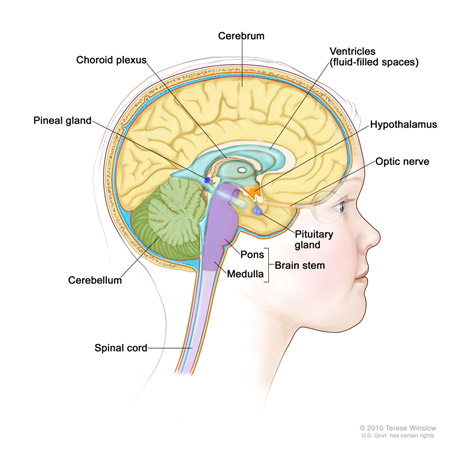Brain Tumors (Central Nervous Tumors)
The central nervous system (CNS) is made up of the brain and the spinal cord. Together, these important organs control functions necessary to sustain life, such as breathing, heart rate, movement, thinking, and learning. Important substances produced in the brain stimulate and control many other organs in the body. Tumors that develop in this critical area have many unique properties and symptoms.

Brain tumors are not a single kind of tumor, but include several different tumor types.
As a group, these are the most common solid tumors in children less than 15 years of age, and account for approximately 20% of all cancers diagnosed in this population. Other important facts about tumors that occur in the brain and spinal cord include the following:
- Tumors can arise at any age in any area of the brain and spinal cord, although some specific types of pediatric tumors tend to occur more often in certain parts of the brain.
- Brain tumors are categorized by the type of malignant cell and by the area of the brain in which they develop.
- The terms "benign" and "malignant" as usually applied to tumors are not as useful when describing CNS tumors. Because the brain and skull are located inside a fixed amount of space, even "benign" or slow-growing tumors can cause serious problems.
- Most brain tumors tend NOT to “metastasize” or spread to distant areas to other parts of the body outside the brain and/or spinal cord (CNS). They do, however, tend to recur locally, or spread to other areas of the CNS.
Last updated September, 2011
Newly Diagnosed with Brain Tumors
In Treatment for Brain Tumors
After Treatment for Brain Tumors








